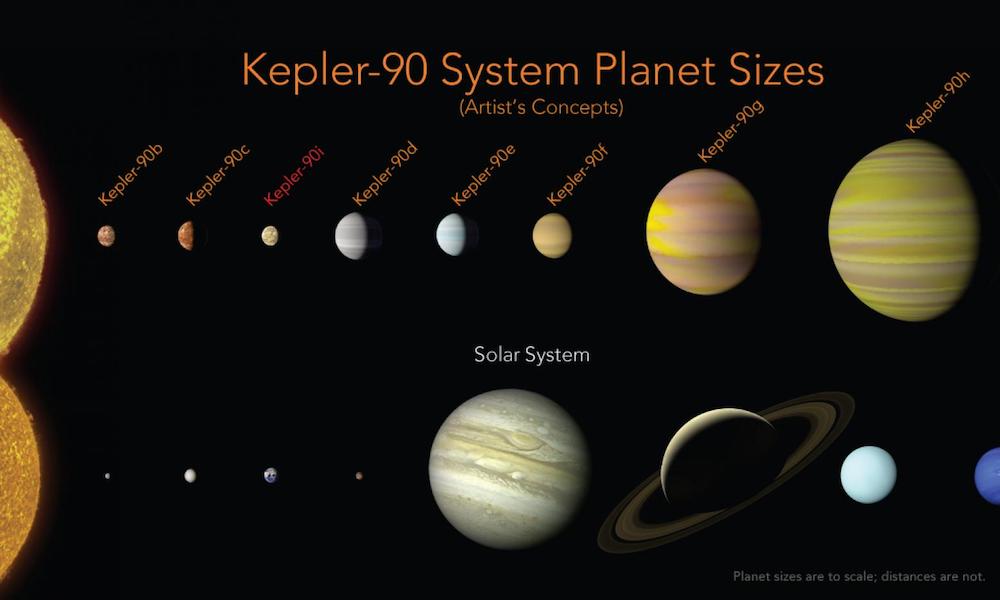Google AI Researchers and NASA Discover Two New Planets

Toggle Dark Mode
Researchers from Google, the University of Texas at Austin, and NASA have used an artificial intelligence algorithm to discover two new exoplanets, dubbed Kepler 80g and Kepler 90i.
Kepler 80g is now the sixth planet known to orbit the star Kepler 80. The latter, on the other hand, has turned out to be the eighth planet orbiting its star, marking the discovery of the first alien solar system with as many planets as our own.
“This ties Kepler 90 with our own solar system for having the most known planets,” said Paul Hertz, director of NASA’s Astrophysics Division in Washington.
Kepler 90i lies 2,500 light years away from Earth and is likely extremely hot and rocky, with a searing surface temperature of 1,800-degrees Fahrenheit. Like Earth, it is the third planet from its sun, Kepler 90, which is a star in the constellation of Draco.
“Kepler-90i is not a place I’d like to go visit,” Andrew Vanderburg, an astronomer at the University of Texas at Austin who helped find the planet, said during a press briefing.
Since the Kepler observatory launched in 2009, the space telescope has looked at 150,000 stars to date and generated over 30,000 possible planetary signals by measuring the light from those stars. In particular, the Kepler telescope searches for the slight shadows cast by planets as they pass their parent stars. This sometimes means dips in lumosity that are as slight as 0.01 percent. While that data has helped astronomers discover more than 2,000 new planets to date, scientists were well aware that they had probably missed subtle indications of other alien worlds within the data they had already sifted through.
“It’s like needles in a haystack,” said Chris Shallue, a senior engineer at Google AI and one of the researchers on the project.
To address this issue, AI researchers from Google and the University of Texas at Austin trained a machine-learning algorithm to identify planets using 15,000 signals generated by the Kepler space telescope. The algorithm eventually achieved a 96 percent success rate in identifying which signals reflected planets and which did not. The researchers then directed the AI to search through signals from 670 stars that were already known to have planets, including Kepler 90– a star that was previously known to have seven planets in its orbit.
“Just as we expected, there are exciting discoveries lurking in our archived Kepler data, waiting for the right tool or technology to unearth them,” Hertz said. “This finding shows that our data will be a treasure trove available to innovative researchers for years to come.”
After their initial success, Google and NASA plan to use the AI algorithm to scour the other 14 billion data points generated by the Kepler telescope in the hopes of finding new exoplanets, including Earth-like ones.
“What is perhaps most exciting is that they are able to find planets that were previously missed, suggesting there are more yet to be found using this approach”, Suzanne Aigrain, an astrophysicist at Oxford University said to The Guardian.






